A GUIDE FOR THE GIANT BODY
Solo exhibition
Centralbanken, Oslo, 2024
Centralbanken, Oslo, 2024








Excerpt from printed guide made for the exhibition:

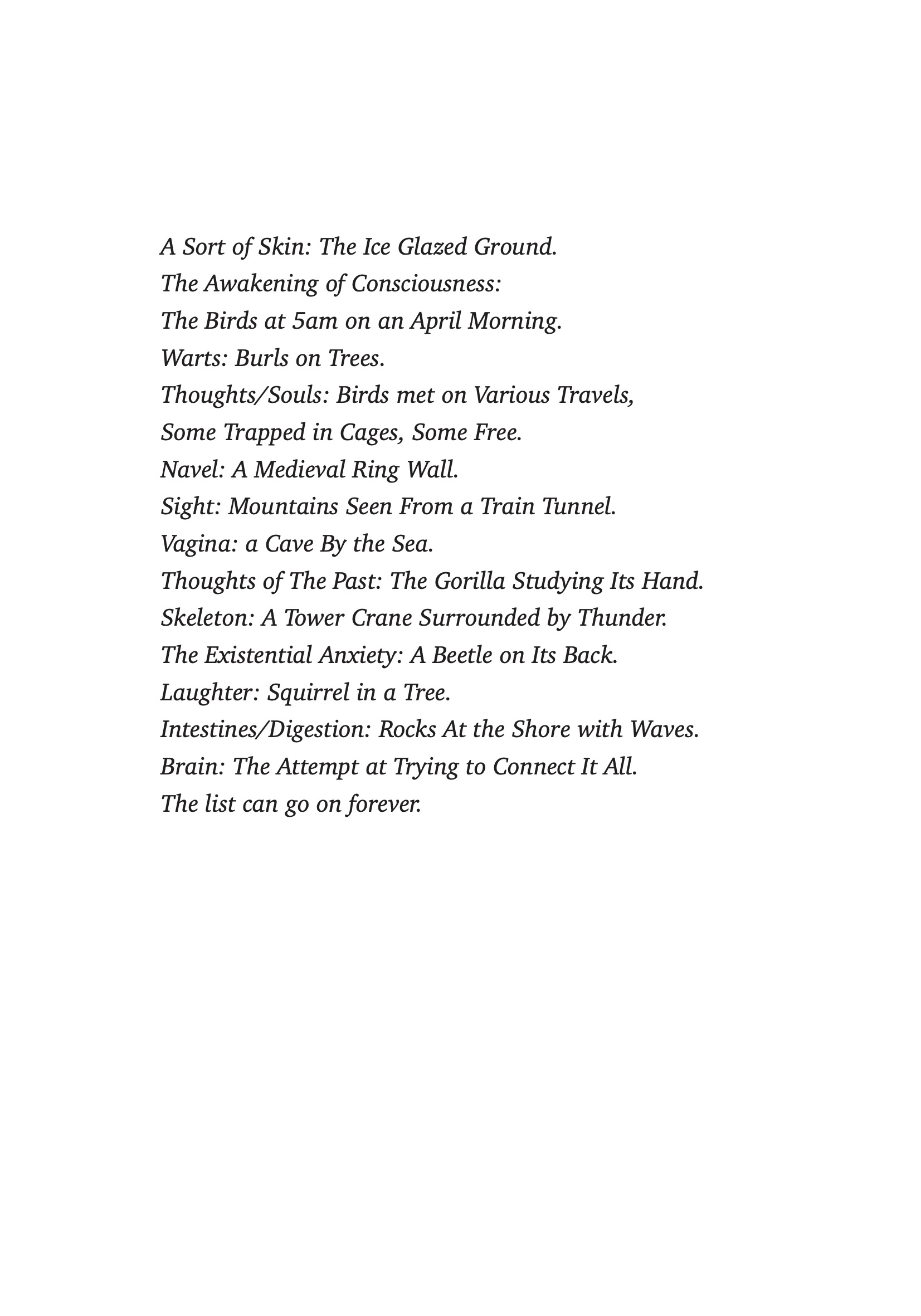






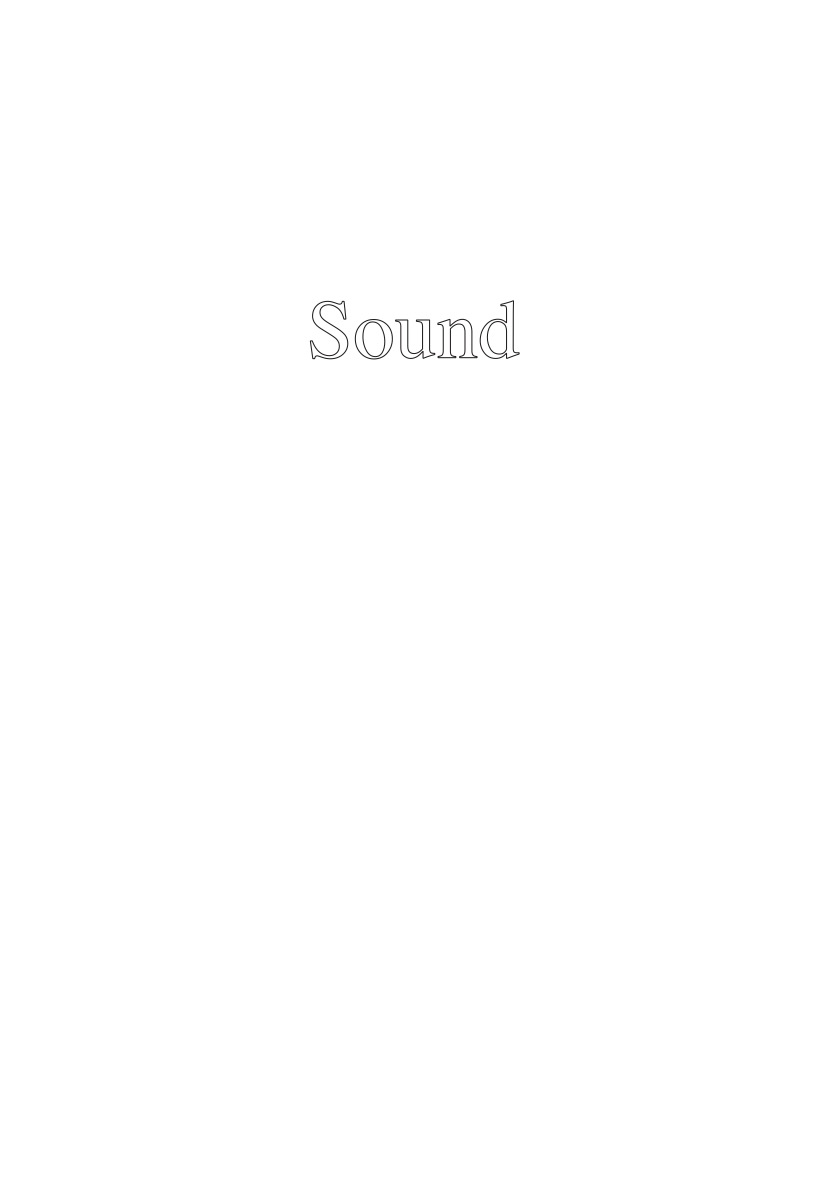

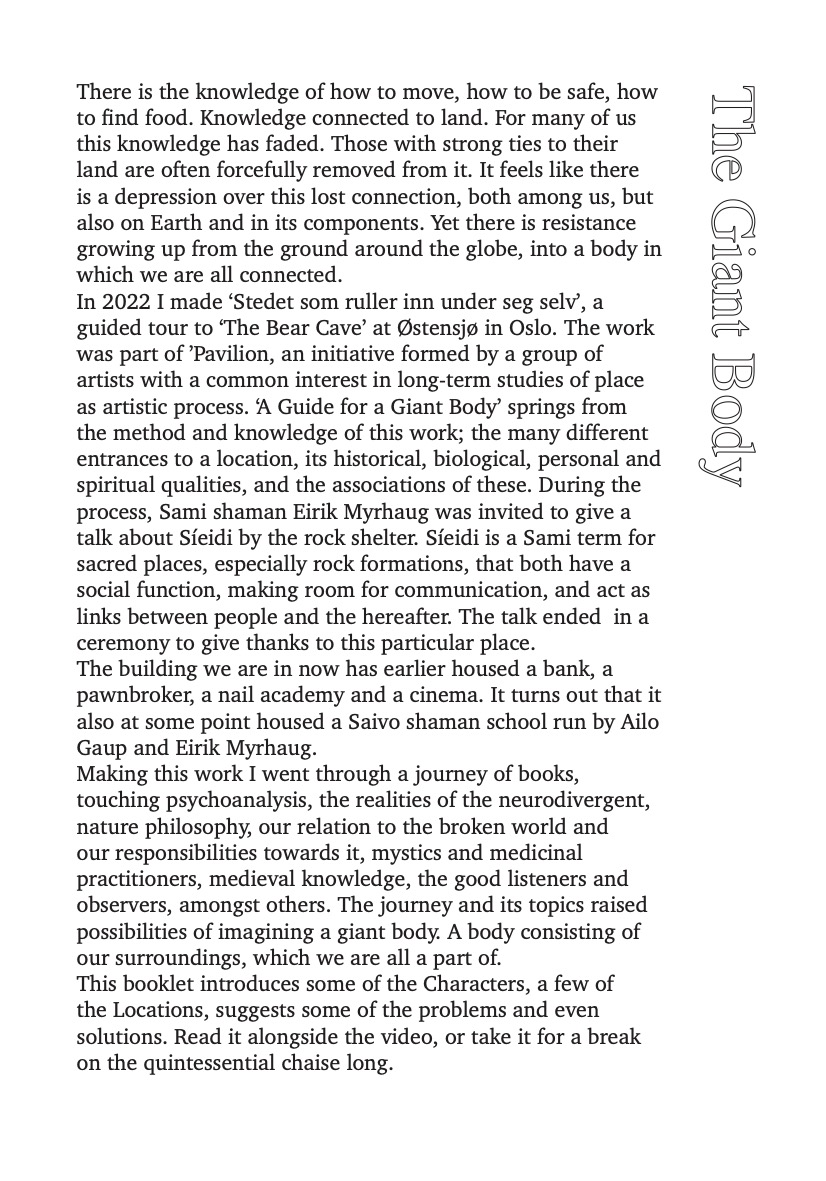
WIGGLE ROOM
Artist book/Monograph, hardback, swiss bind, 336 p
Concept and design: Franziska Nast
Text: Espen Sommer Eide and Maija Rudovska
Concept and design: Franziska Nast
Text: Espen Sommer Eide and Maija Rudovska
Buy here






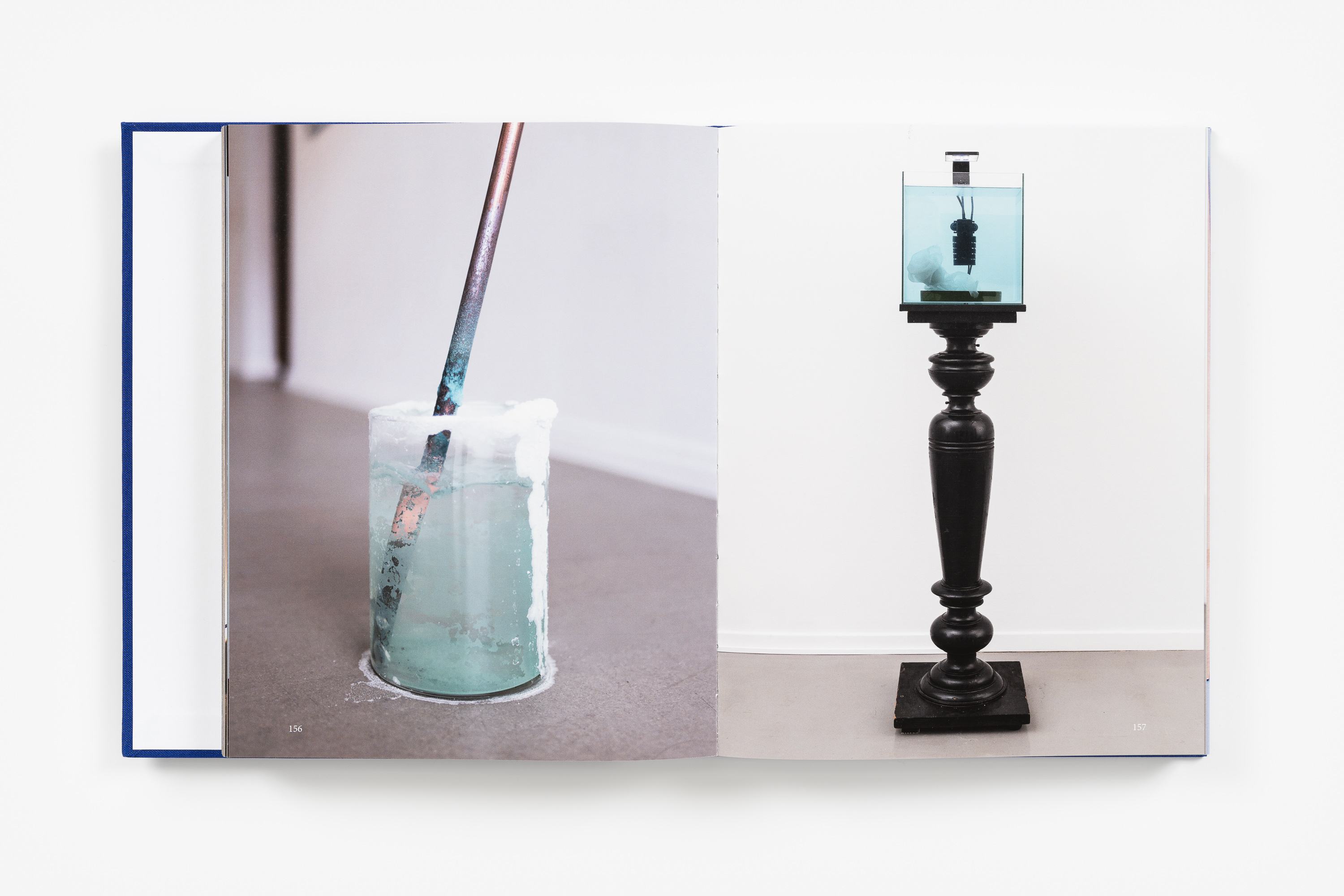
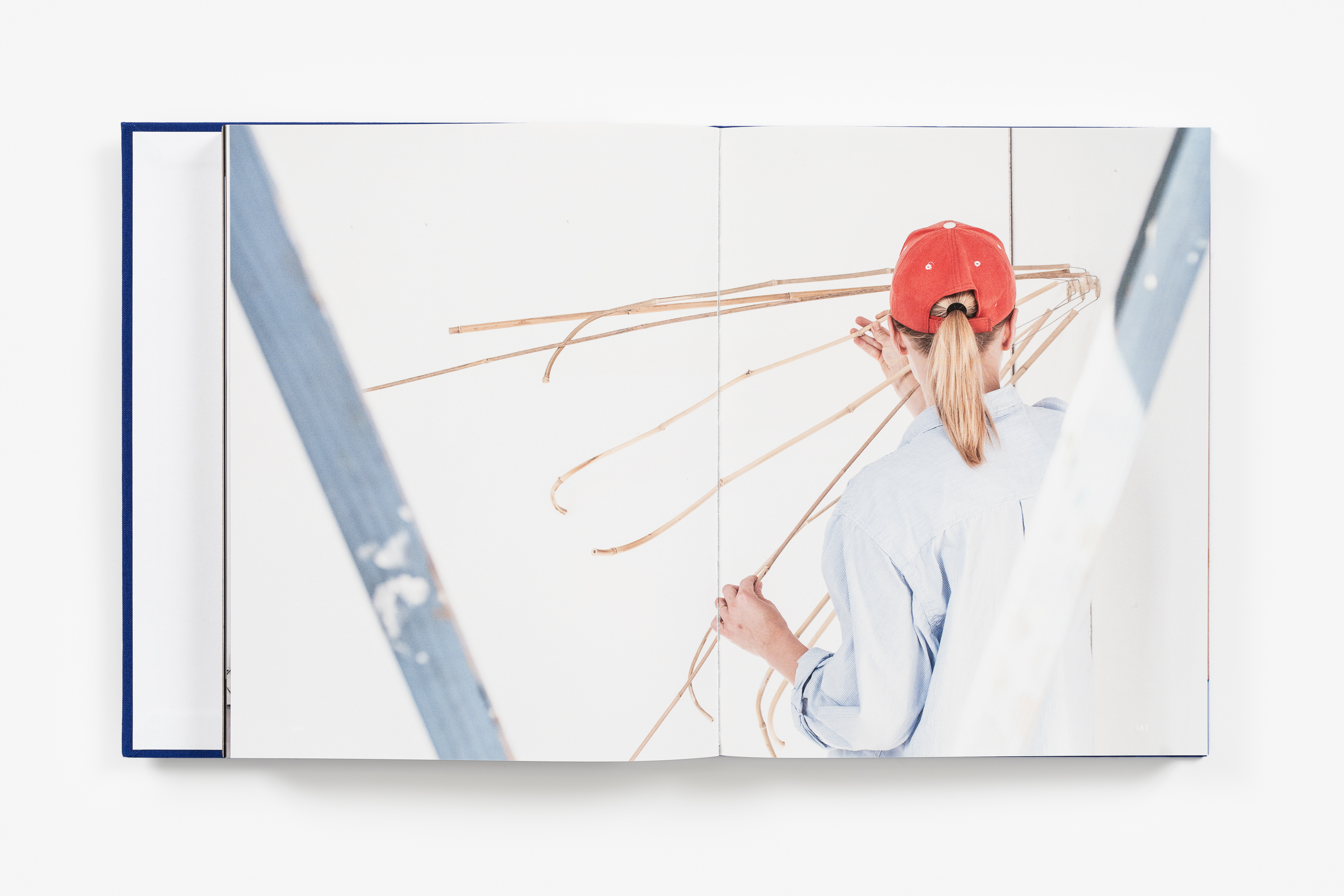









Wiggle Room is a non-linear, retrospective, image-based book. The book provides a comprehensive presentation of Andrea Bakketun's artistic practice over the past seventeen years. It explores what happens when works are resumed with new experiences and fields of interest, and what appears when they are connected across time and context.
Monumental soap sculptures, pump systems, video collages, research-based projects and kinetic sculptures directed by insects — Bakketun's works operate in a state of flux, processed through a rich spectrum of materials and media. The fragility and impermanence of the relationship between subject and object in the world around us is explored intuitively and in an eclectic manner. In Bakketun's work, however, the juxtaposition itself takes precedence over the parties involved; it is in the combination of elements that the works arise. The processes can be reminiscent of alchemical activity in which driftwood from consumer society is joined with the forces of nature.
Together with designer Franziska Nast, Bakketun has worked with her own image archive as an open material and source. They have fragmented and reassembled works in an undulating dramaturgical and non-hierarchical way. Wiggle Room allows several directions at the same time and explores the openness to change, new connections and derailments in Bakketun's work. Works are reactivated and meet across time and context. The reader is also given the opportunity to form new narratives, without any right answer or direction.
The image material in the book is accompanied by newly written texts by musician and artist Espen Sommer Eide (NO) and curator and writer Maija Rudovska (LV), in addition to text work and diary notes written by Bakketun herself.
The book is published on its own and together with Grand Complications, a 212-page book published by Distanz Verlag in 2020.
Arts Council Norway, The Audio and Visual Fund, Ingrid Lindbäck Langaard's foundation and the Visual Artists' Remuneration Fund have supported the book.
Photos: Grieg Wyller forlag/Istvan Virag
The book can be purchased at the following locations.
STEDET SOM RULLER INN UNDER SEG SELV
Guided tourPaviljong Våtmark
October 2022 - October 2072

«Stedet som ruller inn under seg selv» is a kaleidoscopic guide where one audience member at a time receives a backpack and a guide book that leads towards a hidden cavity, a space for shelter and residence. The location is a source for a number of stories — historical, scientific, personal and spiritual. The infrastructure of the rock, moss growth and the birds' sense of hearing are linked together with the floodlit artificial grass pitch and the hangout for youngsters, homeless and hunters 8000 BC. Through the instructions and texts in the book as well as the kit for explorations found in the backpack, the audience is offered a multitude of entry points to access the place′s past and present.
If you would like to join the guided tour, email me and I will let you know when the next opportunity arrives.
Photo credits: Frank Holtschlag
ESTABLISHMENT AND MAINTENANCE OF CONTACT
Outdoor installation made for Dorothe Engelbretsdatters plass, Bergen
Curated and produced by Volt
16–19 June 2022
Novelist, poet and writer Cecilie Løveid did a reading at the opening of the exhibition
Photo: Thor Brødreskift/Volt
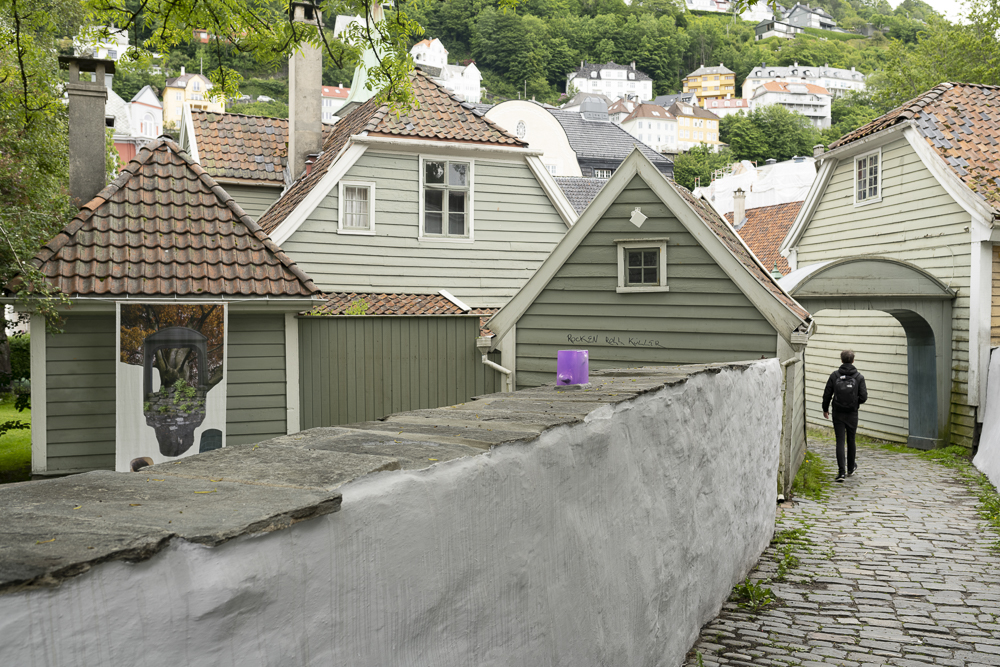

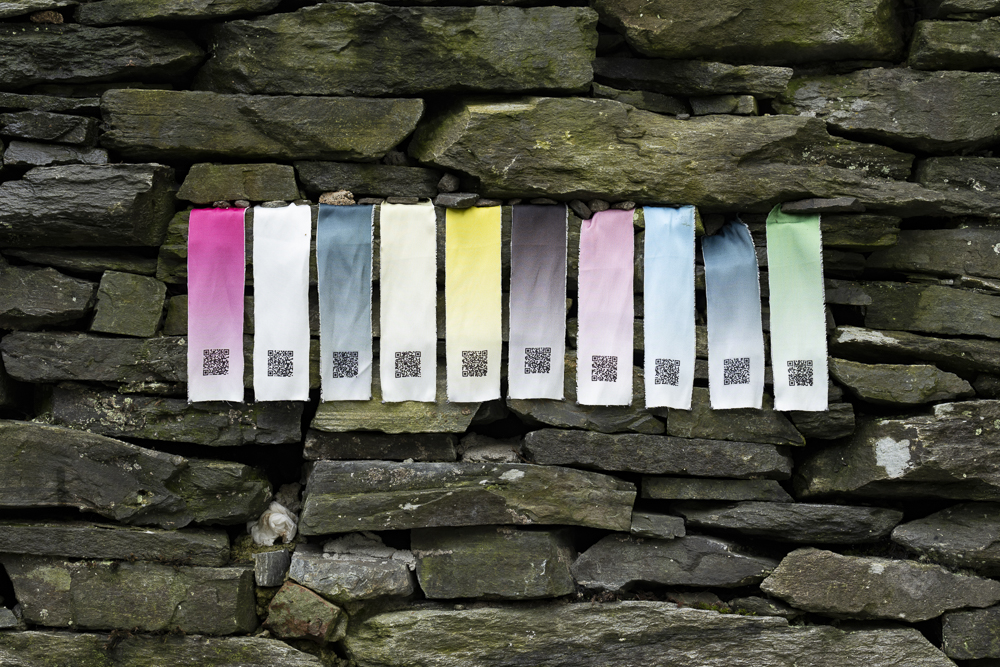

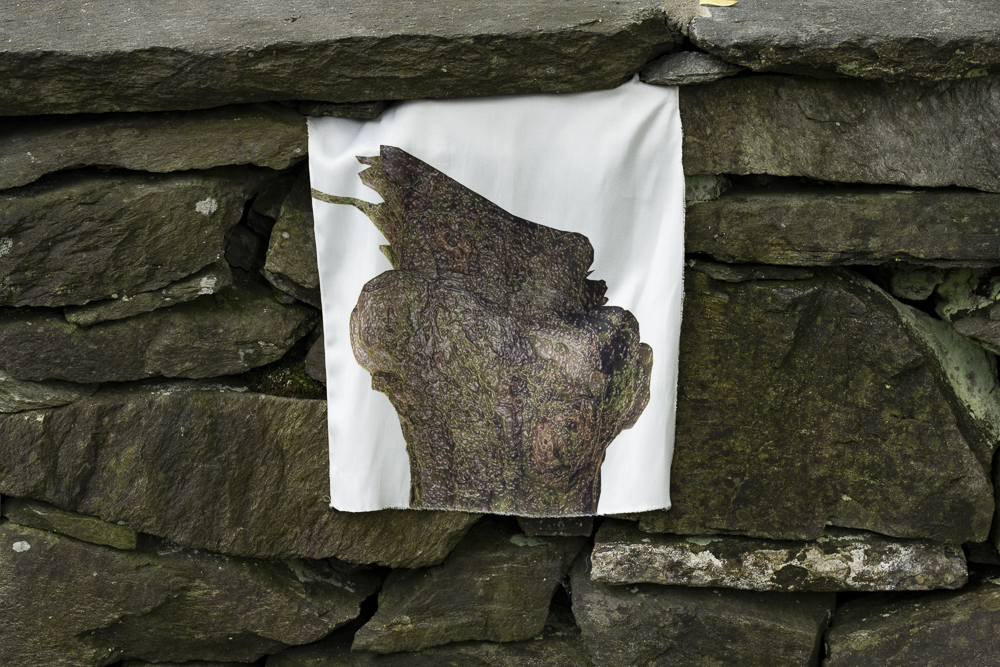

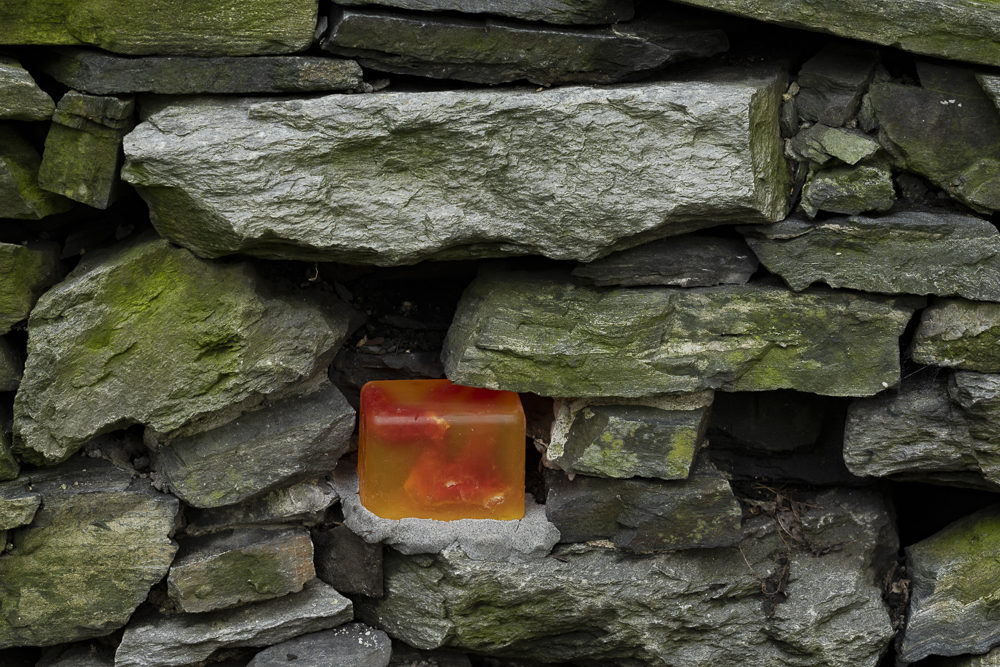


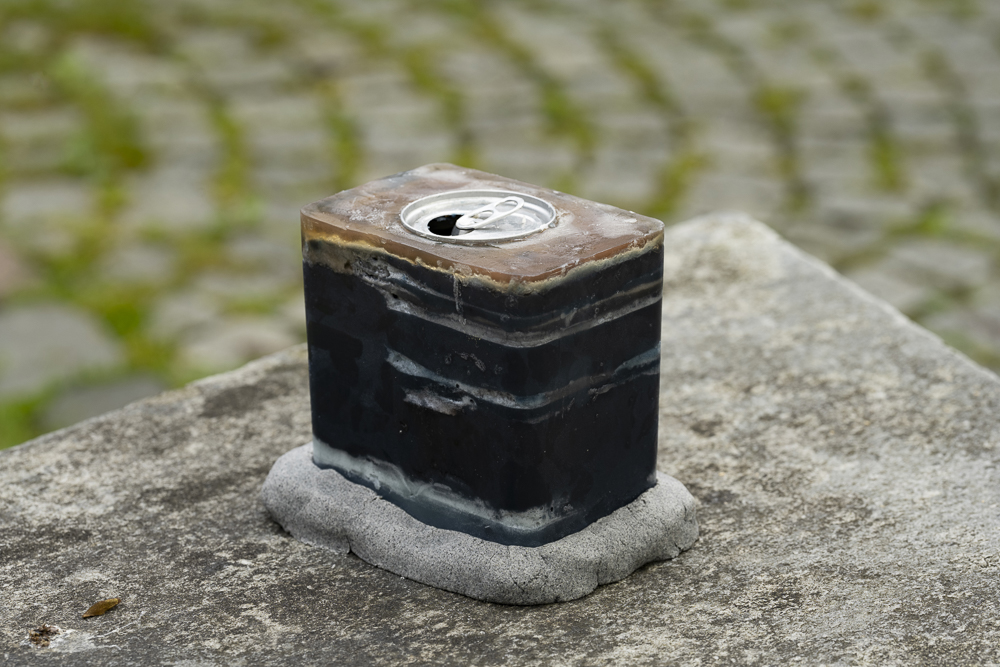


Establishment and maintenace of contact
An outdoor installation of new works by Andrea Bakketun made for Dorothe Engelbretsdatters plass, a public square between Marken and Kong Oscars gate in Bergen, next to St. Jørgen's hospital, where leprosy patients were treated and isolated from 1600–1900. The project relates to the history of the place and its current role in the urban space of the city, as well as to the author the place is named after.
Dorothe Engelbretsdatter (1634–1716) was Norway's first renowned female poet, popular in her time and especially known for her hymn writing. Her books are heavily influenced by the dramatic contrasts of the Baroque period and her tragic life experiences. She was a priest's daughter, and also married a priest in Bergen, and lost both her husband and seven of her nine children to illness. She strove to be taken seriously in her time – she was, for instance, accused of not having written her own texts. Today, her writings are little known, and the place named after her also appears to become a forgotten place, a worn urban space that few know about.
Bakketun has delved into the history and physical characteristics of the location, allowing small details and associations to form new connections. In this project she has been interested in investigating whether urban spaces like this, with their history and use, can function as a scenography that connects us to what has been, and shed new light on what is, just as places of worship function as passages to origin and afterlife.
There is a closed-off fountain in the square, which Bakketun activates with a temporary, solar-powered fountain in a glass cube. A textile featuring a photo collage is mounted on one of the houses from the hospital facing the square (now part of The Leprosy Museum). Here, visual elements from the city are juxtaposed: an archaeological excavation at Bergen Cathedral and trees from Assistentkirkegården (The Assistant Cemetery), which is one of Bergen's honorary cemeteries as well as a cholera burial ground.
Natural forces and unpredictable events in the public space will leave their mark on the objects, which are made of different materials, including soap. The soap is highly malleable, it is affected by temperature and humidity, and if transparent, it will change according to the lighting conditions on site. Inside the colourful blocks of soap we find symbols and objects related to the use and history of the place: an hourglass, a sharps bin, an ashtray, a hand and a small cobblestone found at the site.
Sacrifice was a recurring theme for Engelbretsdatter. The function of a sacrifice is to establish or maintain contact with the divine. That something is sacrificed means that it is transferred from the sphere of daily life to that of the divine: to express gratitude, ask for forgiveness of sins or to be cleansed from impurities. During the project, Bakketun has become interested in this type of action, and the exaltation of a place through rituals and objects, and this has also played into her choice of materials. Soap is made of fat or oil, ashes and water. It is used to fight bacteria and epidemics. After a burnt offering, when the fire is extinguished with water, soap is what is left: a by-product of worship.
For the installation, Bakketun has also created small text and video works that can be accessed through QR codes scanned on a smart phone or throught the links below:
MONUMENT FOR 86400 SECONDS
Sculpture, organic materials, steel, pigment, stone, synthetic fiber, epoxy, fiberglass, rubber hoseShowed at the Sculpture Triennal 2021
Critiques from Kunstkritikk, Klassekampen and Kunstavisen
Photo: Tor Simen Ulstein/KUNSTDOK and private


